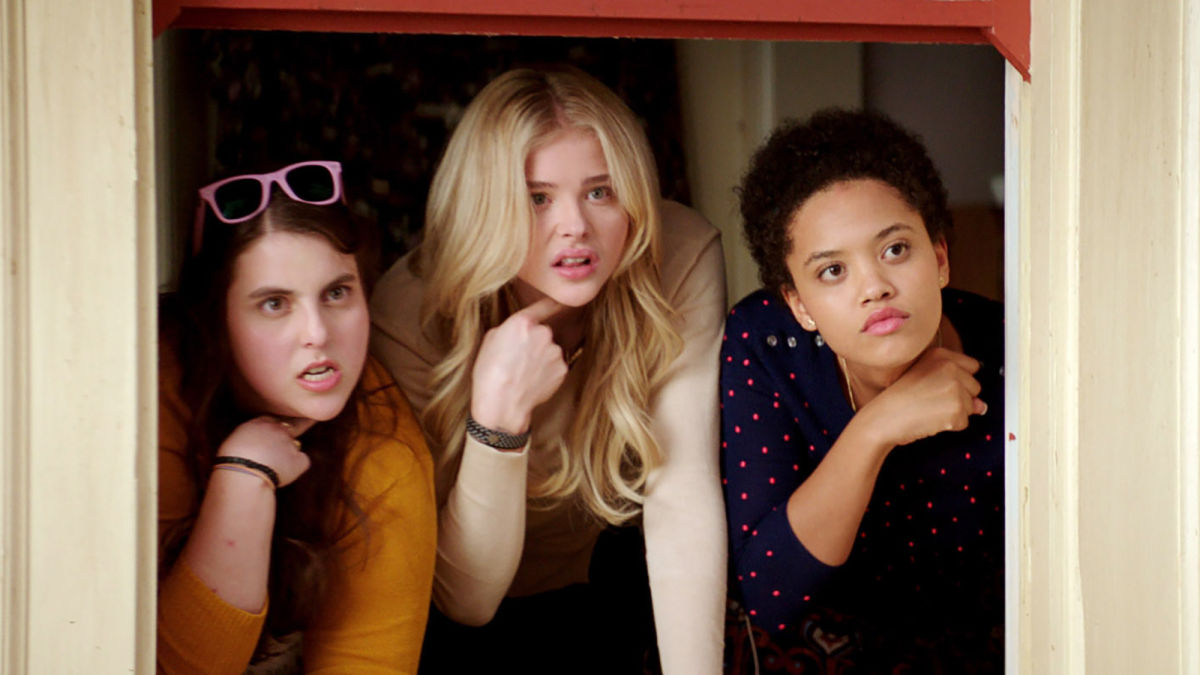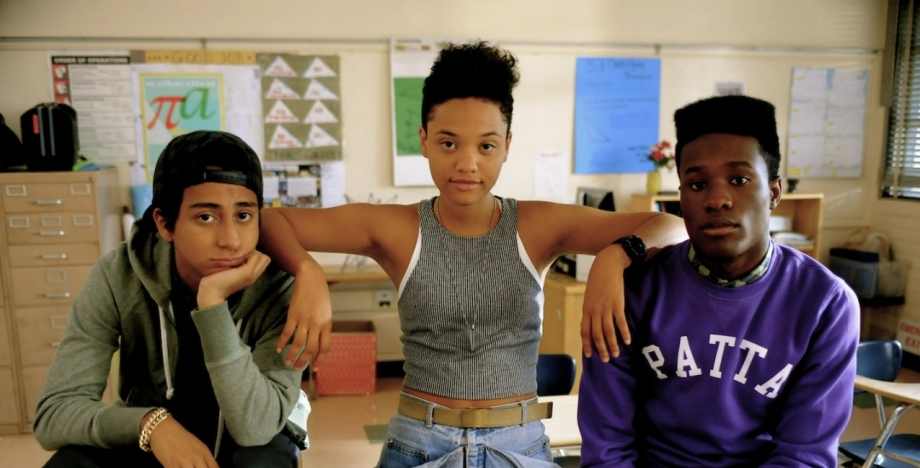This guest post is written by Scarlett Harris.
Andi Zeisler, founder of Bitch magazine and author of the new book We Were Feminists Once, criticizes “choice feminism” in which every choice women make is deemed feminist. This could also be extended to Neighbors 2: Sorority Rising and movies that marginally pass the Bechdel test: they don’t openly hate women, therefore they’re feminist, right?
The premise of Neighbors 2 centers on a trio of rebellious female college students played by Chloë Grace Moretz, Kiersey Clemons, and Beanie Feldstein who start their own, party-hardy sorority in the formerly vacant mansion next door to Mac (Seth Rogen) and Kelly (Byrne) with the help of the original antagonist, Teddy (Zac Efron). Much is made of the Greek system allowing frat houses to host parties while sororities need to remain chaste, which doesn’t fit with the increasingly progressive notions of today’s teens and, particularly, Shelby (Moretz), Beth (Clemons) and Nora (Feldstein). They are skeeved out by the obvious attempts of fraternities and their members to get young women drunk enough to possibly sexually assault at parties, invoking memories of the University of Virginia’s rape scandal and The Hunting Ground, amongst many other instances of rape on campus. To attend these parties, they are pressured to wear skimpy outfits instead of the hoodies they’re more comfortable in. Their male dorm supervisor berates them for smoking weed in their dorm rooms and if they can’t do it there, they sure as hell wouldn’t be able to if they successfully rushed a traditional sorority.
Neighbors 2 doesn’t explicitly state that sororities are misogynist, but the goal of the alternative sorority (essentially an all-female share house, right?) at its center to create a space where the women can make their own fun outside of the patriarchy — that wants them to be well behaved and perform their sexuality for men — is feminist, whether the movie states it or not. Mac and Kelly frequently utter the word sexism and ponder how hard it is to navigate being a woman in the world as they realize (spoiler alert) that taking down the sorority is antithetical to how they want their daughters to grow up in a world that already treats them differently from men. In addition to Neighbors 2’s central premise, these plot points add more checks to the feminist column. Could Byrne’s encouragement of hiring women writers for the sequel be to thank? Possibly. Although it’s awful that co-writers Amanda Lund and Maria Blasucci, as well as other women writers who worked on the film, are not even credited.
Furthermore, feminist principles are evident in the newly crowned sorority Kappa Nu’s party themes, such as sad movie night in which they cry into their jumbo sized tubs of ice cream, feminist heroines including Oprah, Joan of Arc, and Hillary Clinton (both Senator and future President iterations), and a celebration in honor of Shelby’s impending virginity loss, commemorating the shedding of something many young women see as a burden these days as opposed to a gift or virtue.
Neighbors 2 acknowledges femme feminism and that some women enjoy putting a lot of effort into their appearance while Shelby and her besties prefer a more relaxed style.
There’s also a scene in which Shelby, Beth, Nora, and their friends are so distracted and turned on by a dancing, oiled up Zac Efron (and if you’re attracted to men, who could blame them?) that they allow the large amount of weed they’re selling in order to raise money for their sorority to be stolen. While the celebration of young women’s sexuality isn’t seen in a lot of comedies (more often young women are portrayed as sex objects, not subjects), one of the opening scenes in which Shelby reveals she’s a virgin did feel like an excuse to get a joke in about “everything but” being about eating out a guy’s butt instead of being truly revolutionary.
In that way, why make it about sexual experience at all? The above-mentioned dancing scene was enough to establish that young women are sexual beings but, crass and overt sex jokes take priority. I suppose it could also be seen to be an effort to show that women can be just as badly behaved as men (which isn’t necessarily a good thing), but surely the selling of weed, the trashing of their neighbors’ home, and the trapping of Mac, Kelly, and Teddy in order to protect their right to party is testament enough to that. (In an earlier scene Teddy’s bestie and roommate Pete explains to him that there is no legal right to party.)
Speaking of Teddy, Meg Watson at Australian pop culture website Junkee writes, in her review of the movie, of the covert discomfort with showing male affection exhibited by Mac and the gay acceptance shown in Pete’s engagement and subsequent wedding:
“This same-sex relationship is used as an integral part of the plot and is never once exploited for an uncomfortable #nohomo joke. This shouldn’t be a big deal, but for a Rogen/[Evan] Goldberg production (which regularly use gay sex as a punchline), it’s enormous. At one point Mac’s mild anxiety around male intimacy is even diffused on-screen as Teddy explicitly asks for a hug because he ‘needs to feel valued’. The laugh isn’t on Teddy’s over-sentimentality; instead it’s on Mac’s initial reluctance. The hug is good! They feel better! It’s silly guys don’t do it more!”
So, while movies have been made about far more feminist things than creating a new sorority — an archaic, hierarchical relic in itself — Neighbors 2 is important because it introduces a different audience to a topic they may not have thought about before or, like Teddy, have noticed rumblings of gender inequality but don’t have the language to discuss. The Neighbors franchise is still created by and for men but it’s important to give praise where it’s due, and Neighbors 2 tries with all its might to address sexism and misogyny, almost painstakingly.
Scarlett Harris is an Australian writer and blogger at The Scarlett Woman, where she muses about femin- and other -isms. You can follow her on Twitter @ScarlettEHarris.







